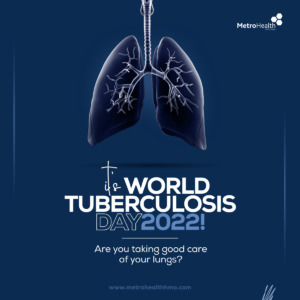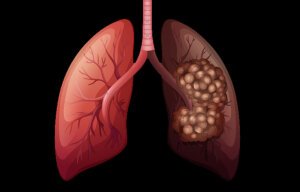Tuberculosis (TB) remains one of the world’s deadliest infectious killers. In 2020, an estimated 10 million people fell ill with tuberculosis (TB) worldwide; 5.6 million men, 3.3 million women, and 1.1 million children fell ill with this preventable and curable disease, as stated in an article by World Health Organisation.
World Tuberculosis Day is observed every March 24 to raise public awareness about the devastating health, social and economic consequences of tuberculosis, and to step up efforts to end the global tuberculosis epidemic. The theme of World TB Day 2022 – ‘Invest to End TB, Save Lives.’ –conveys the urgent need to invest resources to ramp up the fight against TB and achieve the commitments to end TB made by global leaders.
According to an article written by James Mclntosh, 2021 Tuberculosis (TB) is an infectious disease caused by bacteria (Mycobacterium tuberculosis) that most often affect the lungs, though it can affect any organ in the body. It develops when bacteria spread through droplets in the air. TB can be fatal, but in many cases, it is preventable and treatable.
There’s only one cause of TB:
Mycobacterium tuberculosis bacteria causes TB. They can spread through the air in droplets when a person with pulmonary TB coughs, sneezes, spits, laughs, or talks, as opined in a publication by Mayo Foundation for Medical Education and Research (MFMER) 2022.

SYMPTOMS OF TUBERCULOSIS
The following are symptoms of tuberculosis as mentioned in an article by NHS Services 2019.
- Coughing for three or more weeks.
- Coughing up blood or mucus.
- Chest pain, or pain with breathing or coughing.
- Unintentional weight loss.
- Fatigue.
- Fever.
- Night sweats.
- Chills.
RISK FACTORS OF TUBERCULOSIS
The following are risk factors recorded in a journal published by the National Library of Medicine 2013.
- Close contact with someone infected with active TB
- Immunocompromised status (Elderly, Cancer)
- Drug abuse and alcoholism
- Pre-existing medical condition (Chronic renal failure, Diabetes mellitus)
- Immigrants from countries with a higher incidence of TB
- Prolonged stay within Hospital Environment
- Health care workers
DIAGNOSIS
A newsletter from MedicalNewsToday 2021 states that a person with latent TB will have no symptoms, but the infection can show up on tests.
A doctor will ask about any symptoms and the person’s medical history. They will also perform a physical examination, which involves listening to the lungs and checking for swelling in the lymph nodes.
Two tests can show whether TB bacteria are present:
- the TB skin test
- the TB blood test
However, these cannot indicate whether TB is active or latent. To test for active TB disease, the doctor may recommend:
- sputum test
- chest X-ray.
Everyone with TB needs treatment, regardless of whether the infection is active or latent.
TREATMENT
According to a publication by the Centre for Disease Control and Prevention 2019 USA, with early detection and appropriate use of antibiotics, TB is treatable.
The right type of antibiotic and length of treatment will depend on:
- the person’s age and overall health
- whether they have latent or active TB
- the location of the infection
- whether the strain of TB is drug-resistant
Treatment for latent TB can vary. It may involve taking an antibiotic once a week for 12 weeks or every day for 9 months.
Treatment for active TB may involve taking several drugs for 6–9 months. When a person has a drug-resistant strain of TB, the treatment will be more complex.
It is essential to complete the full course of treatment, even if symptoms go away. If a person stops taking their medication early, some bacteria can survive and become resistant to antibiotics. In this case, the person may go on to develop drug-resistant TB.
Depending on the parts of the body that TB affects, a doctor may also prescribe corticosteroids.
PREVENTION
Ways of preventing TB from infecting others include:
- getting a diagnosis and treatment early
- staying away from other people until there is no longer a risk of infection
- wearing a mask, covering the mouth, and ventilating rooms
- TB vaccination
CONCLUSION
Without treatment, TB can be fatal if it spreads throughout the body, the infection can cause problems with the cardiovascular system and metabolic function, among other issues. TB can also lead to sepsis, a potentially life-threatening form of infection. Hence it is important to prevent tuberculosis and invest resources to ramp up the fight against TB.










